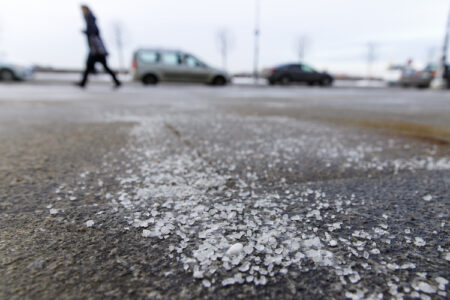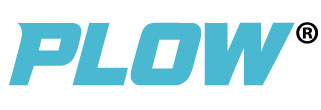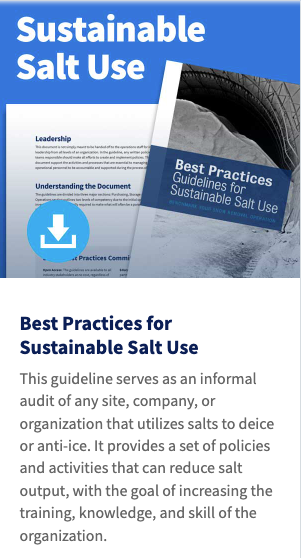
A study released this past October reveals that excess “salt pollution” in freshwater and soil may be a “sleeping giant” of environmental problems. And the single biggest source of salt in the U.S? The form used to de-ice roads in the Winter.
This information comes from an article by Kasha Patel in The Washington Post on the study. Over the past 50 years, salt ions have increased in streams and rivers due to human behavior. Yet before the study, scientists didn’t really know how much humans were changing global salt concentrations.
The study found that across the globe, about 2.5 billion acres of soil — an area about the size of the U.S. — have become saltier, reported The Washington Post. Study lead author Sujay Kaushal called the issue a “sleeping giant” while ecologist Bill Hintz told the Post the “magnitude to which we have altered one of Earth’s natural cycles is alarming.”
Freshwater & Soil At Risk
Saltier water led to brown tap water for months in Montgomery County, MD. It also played a part in creating the toxic lead-laden water in Flint, MI, reports the Post. “We use water for everything from growing crops to drinking to industrial processes to heating and cooling,” Kaushal, a geologist at the University of Maryland told the Post. “But when you have salt in the water, it affects all of those things … and it’s increasing.”
Only about 3% of Earth’s water is fresh, and salt is increasingly spoiling that small inventory. Unfortunately, as mentioned, a big source in the U.S. is road salt used for de-icing roads in the Winter. From 2013 to 2017, it made up 44% of the country’s entire consumption, says the Post.
Sustainable Salt Initiative
Recognized for its environmental concerns as well as its impacts on infrastructure, road salt has become a major issue addressed by the Snow & Ice Management Association (SIMA). SIMA, WIT Advisers, and Viaesys are working together to research application rates for snow professionals in real-world settings through the Sustainable Salt Initiative (SSI). This information will be coupled with research conducted by Snow and Ice Control for Parking Lots, Platforms, and Sidewalks (SICOPS) to determine a set of recommendations for salt applications that make business sense and proactively addresses environmental concerns associated with over-application.
The SSI is looking for companies who are willing to invest in the process of collecting real-world data on salt application rates. After an initial investment in equipment, a company will be outfitted with a web-based, GPS-enabled tracking system that automatically tracks material as sites are serviced. Supplemental marketing materials will also be provided for research participants to share with clients and prospects. Click here for more information.
Salting Tips
SIMA recently authored an article on Sustainable Salting in PLOW® magazine, a special insert of Turf. While we recommend reading the full article, just some tips include:
- Educate clients. Clients may not realize they are incentivizing over-applications with Level of service (LOS) expectations for “wet” or “black pavement” conditions, particularly “zero tolerance” clients. The thought that more application means less liability also spurs overuse.
- Standardize application rates and calibration for operators to follow.

Find a downloadable Best Practices for Sustainable Salt Use from SIMA here. - Before deicing with salt, use mechanical removal (such as plowing, blowing, and sweeping) to achieve as clean a scrape as possible.
- Prioritize anti-icing. Applying liquids in advance of a storm can reduce the amount of salt used and achieve longer residual than granular material. Use brine (NACL, MgCL, CaCL) for anti-icing and pre-wetting.
- Know the limits of the material you’re applying. Rock salt is only effective to 15°F. Inventory should include the most efficient salt to apply/blend for use in markets that experience temperatures below 15 ̊F. (NaCl – to 15; MgCl to 5; CaCl to -25).
- Participate in the Sustainable Salt Initiative (SSI), to benchmark across regional and national averages.











![[VIDEO] Dickies®: Discover Workwear That’s Anything But Uniform](https://turfmagazine.com/wp-content/uploads/2023/06/1647663814-4b1a2a7742790a9b1e97a3b963477850192e1d6a9dfba9b07214a77bae25d6e3-d-218x150.jpg)





























![[VIDEO] Dickies®: Discover Workwear That’s Anything But Uniform](https://turfmagazine.com/wp-content/uploads/2023/06/1647663814-4b1a2a7742790a9b1e97a3b963477850192e1d6a9dfba9b07214a77bae25d6e3-d-324x160.jpg)